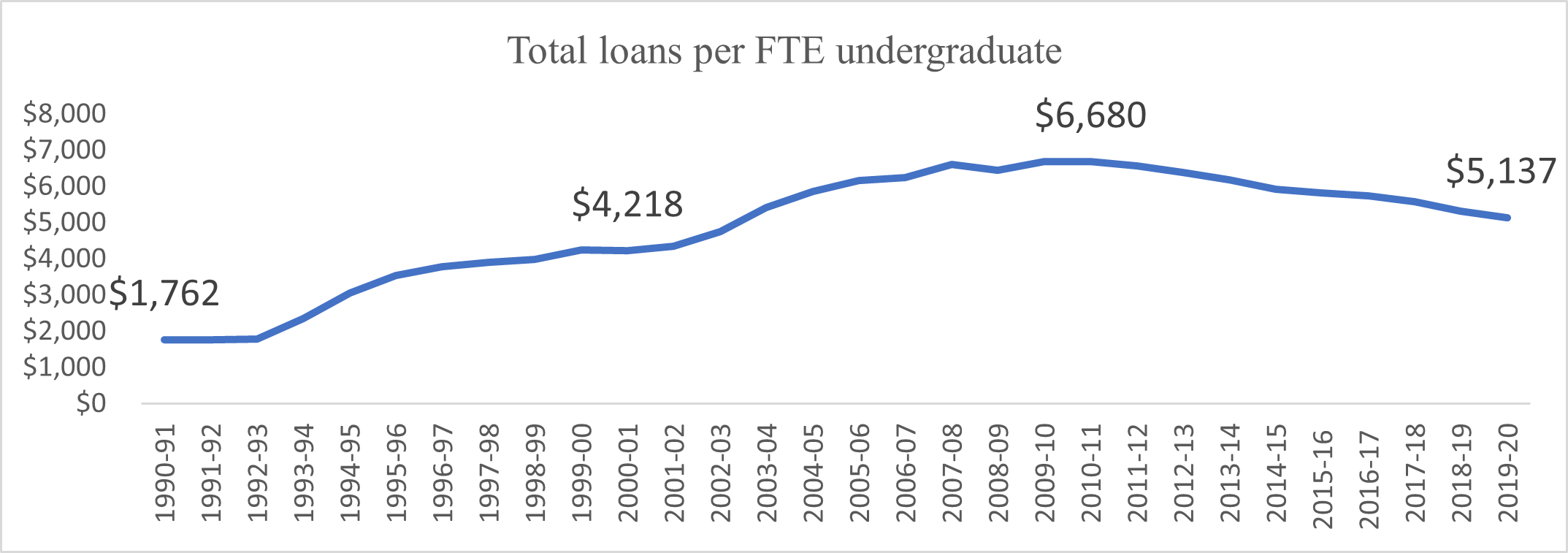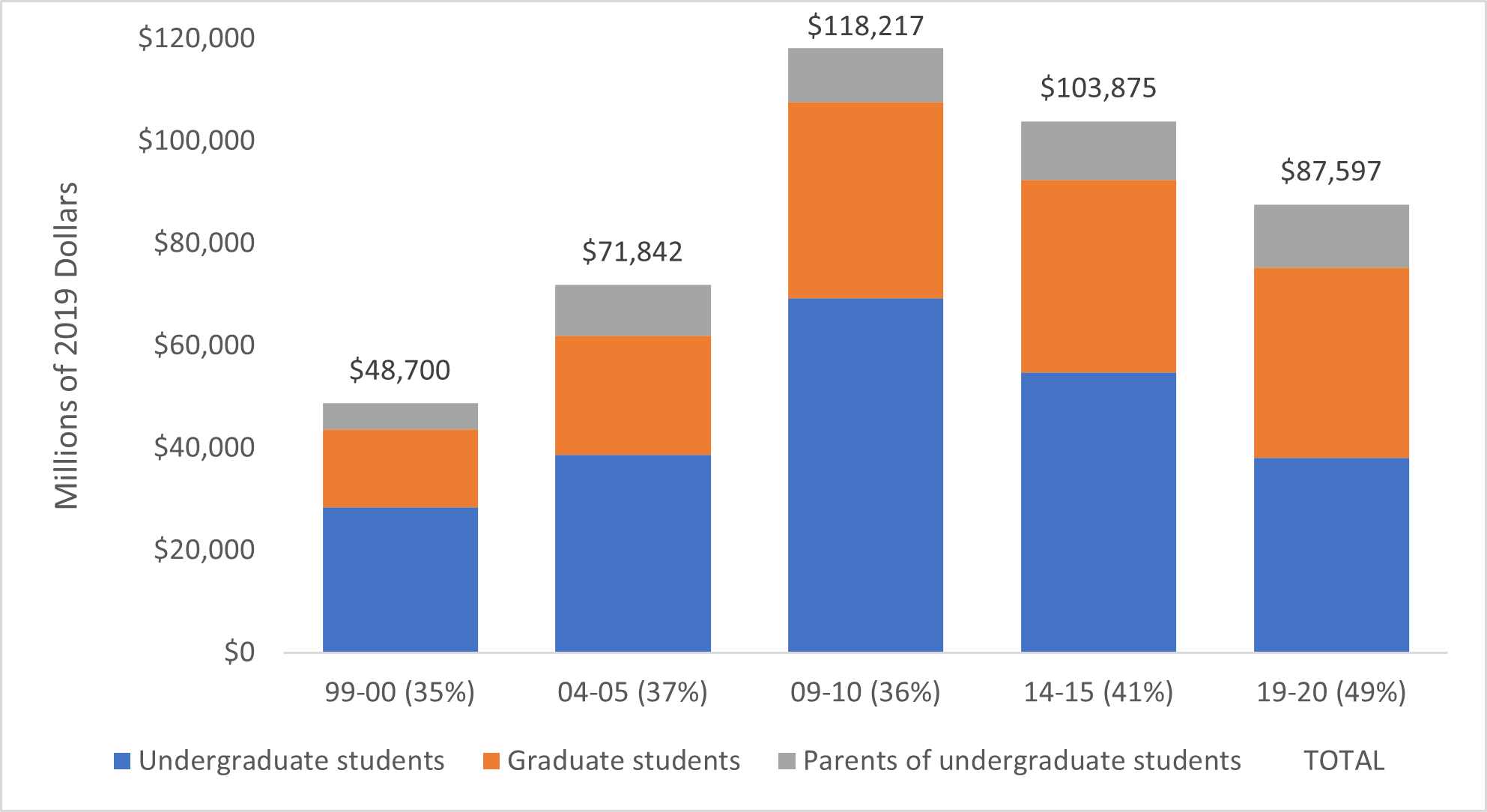We are all eager to get a good sense of the impact of the coronavirus crisis on colleges and universities and their students. It’s not hard to find articles about virus outbreaks on individual campuses, about institutions suffering enrollment declines or about looming cuts in programs and personnel. But it is too soon to have reliable data that would paint an accurate picture of the overall impact on higher education in the current academic year -- much less the likely longer-term changes.
But two sources of data have emerged recently: preliminary enrollment data from the National Student Clearinghouse and average tuition and fee increases for public and private nonprofit institutions from the College Board. Consistent with the broader impacts of the pandemic, this new information raises concerns about the most vulnerable students -- particularly those seeking community college credentials -- facing the biggest new problems.
With about half of colleges reporting, undergraduate enrollment appears to be down 4 percent from fall 2019, according to Clearinghouse data released this month. That doesn’t sound so dire under the circumstances, but first-time enrollment is down a startling 16 percent, including a 23 percent drop at community colleges. The largest declines are among students beginning college in their 20s or later, rather than those who would enroll immediately after high school. It is not hard to conclude that among other problems, family responsibilities such as childcare are interfering with pre-COVID plans.
The College Board reported very small average increases in tuition and fees for 2020-21, ranging from 0.9 percent for out-of-state students and 1.1 percent for in-state students at public four-year institutions to 1.9 percent at public two-year colleges and 2.1 percent at private nonprofit four-year colleges and universities.
Unfortunately, no up-to-date data on the financial aid students are receiving will be available before this time next year, so we don’t yet know much about changes in the net prices that students are actually paying. However, the increases in the grant aid institutions provide to their students account for virtually all of the increases in grant aid over the past decade.
Institutional grant aid rose from 37 percent of all grant aid in 2009-10 to 43 percent in 2014-15 and 49 percent in 2019-20. And we know that community college students don’t get much of that aid. Only 10 percent of their grant aid was from their institutions in 2015-16, compared with 31 percent for public four-year college student and 74 percent for those at private nonprofit colleges and universities. The $150 increase in the maximum Pell Grant for 2020-21 is likely the only source of new funding for many of these high-need community college students.
There is no question that many colleges and universities are experiencing severe declines in revenue as a result of the pandemic, that many students and families are suffering income losses and other hardships, and that the crisis has disrupted many of the best-laid plans. But most of these struggles are more severe versions of trends that were already visible. The Clearinghouse has reported enrollment declines every fall since 2012. This year is extreme, but not a change of direction. The College Board has reported relatively small tuition increases since 2013-14 -- although this year’s increases are even smaller.
Many states froze their public college tuition for this academic year, but price changes in other states varied widely. In Pennsylvania and New Jersey, two of the states with the highest published four-year public prices, average tuition is lower in 2020-21 than it was a year ago, even before adjusting for inflation. The average public two-year price also declined in New Jersey -- but increased in Pennsylvania. The published price at public four-year institutions remained constant in eight states, but rose by more than 4 percent in six states, including a 9.2 percent increase in New Mexico, where tuition remains significantly below the national average.
The average published price at public two-year colleges also remained constant in eight states but rose by more than 4 percent in another eight states, with the largest increase being 6.5 percent in Texas, which enrolls 12 percent of the nation’s public two-year college students.
The flagship public universities in nearly half of the states had no increase for in-state students in 2020-21, but in eight states, the price increase was 4 percent or more. Many states also froze their out-of-state prices, but eight states raised them by 4 percent or more.
At least five elite private colleges made public statements about cutting tuition prices in the face of the pandemic -- by 15 percent at Williams College and 10 percent at several other institutions. According to Market Watch, at least 11 private colleges and universities with sizable endowments froze tuition for the year. But more than 30 of the private institutions with the largest endowments raised their published prices by amounts ranging from 3 percent to 5 percent.
In other words, it is difficult to generalize about the tuition prices facing students this year, despite the encouraging average increases. And again, we don’t know how financial aid has changed. Cutting tuition, particularly at the well-resourced institutions that meet the financial need of their students, has the biggest impact on those who pay the full price without relying on financial aid. For those facing financial struggles, the charges will be out of reach without generous financial aid even with a moderate decline in sticker prices.
In other words, the moderate price increases seem like good news, but unless both the colleges and federal and state governments step up to provide more assistance to low- and moderate-income students -- including those whose financial circumstances have deteriorated significantly during the pandemic -- moderating prices won’t be enough.
The long-term problems in higher education that demand attention are not new. Declining enrollment at many institutions was putting pressure on revenues long before the pandemic; tuition goes up every year, student debt is an ongoing issue and completion rates are too low. There is a lot to worry about.
But it is easy to misread some of the signals. Despite increases in sticker prices, as the College Board report notes, the average net prices students pay after grant aid have been quite stable over the past decade. We should be focused on preventing that trend from reversing. And student debt has stabilized. Both total federal education loans and borrowing per undergraduate student have declined every year since 2010-11. The average debt with which bachelor’s degree recipients graduate has not increased much for at least a decade. Average federal loans per full-time-equivalent undergraduate student declined by 33 percent between 2009-10 and 2019-20, from $6,070 (in 2019 dollars) in 2009-10 to $5,190 in 2014-15 and $4,090 in 2019-20. At the same time, average federal loans per graduate student fell by 9 percent.

Another ongoing pattern documented in the College Board report that merits increased attention as policy proposals focus on student debt is the increase in the share of federal loans going to graduate students. Policy discussions about the possibility of forgiving outstanding student debt -- as well as the current pandemic protection policy of waiving all federal student loan payments and not charging interest on that debt -- rarely consider this reality.
Both the sharp decline in borrowing among undergraduates and the decline in undergraduate enrollment over the past decade, while graduate student enrollment has been increasing, have contributed to the increasing share of loans that go to graduate students. Moreover, the federal government does not place strict limits on the amounts graduate students can borrow, as it does for undergraduates. Graduate students borrowed 34 percent of federal student loans in 1999-2000, 36 percent in 2009-10 and 49 percent in 2019-20. Adults with graduate degrees -- who tend to have incomes far higher than most others -- can, like undergraduates, repay their federal loans through income-based programs that ensure they will have affordable monthly payments with remaining balances eventually forgiven.
Federal Education Loans, 1999-2000 to 2019-20

There is a lot to worry about with respect to the future of educational opportunities. The fact that so many elementary school children are now at home all day places a burden on parents trying to complete a college education that affects few traditional-age students. The decline in enrollment, particularly among older community college students, is a stark reminder of the importance of supporting childcare needs so parents can return to work and to school.
Moderate price increases may be good news, but not if they come at the expense of need-based financial aid. And not if they come at the expense of colleges and universities having the resources they need to provide high-quality academic experiences with the strong academic and social support systems many students require to achieve their goals. It’s not just about getting students in the door and not raising prices too much. It’s about seeing them through to college credentials that will serve them well over the course of their lives.
We will need more data to know exactly how students and institutions are faring during the pandemic and to do anything more than make educated guesses about the future. Meanwhile, we should focus on how current circumstances are affecting the most vulnerable populations. Both the CARES Act and proposals for future action pay particular attention to former college students with education debt.
The enrollment numbers, initial information about college prices and likely trends in state support for higher education make it clear that older students and community college students are particularly at risk. Added to the frequently noted problems about lack of access to appropriate technology, difficulties with online learning, the declining availability of childcare and the populations most vulnerable to COVID, the data suggest policy should focus maintaining educational opportunities for those most at risk of losing them.
"impact" - Google News
October 27, 2020 at 02:02PM
https://ift.tt/34vWkOS
The pandemic's outsize impact on vulnerable students (opinion) - Inside Higher Ed
"impact" - Google News
https://ift.tt/2RIFll8
Shoes Man Tutorial
Pos News Update
Meme Update
Korean Entertainment News
Japan News Update
Bagikan Berita Ini














0 Response to "The pandemic's outsize impact on vulnerable students (opinion) - Inside Higher Ed"
Post a Comment